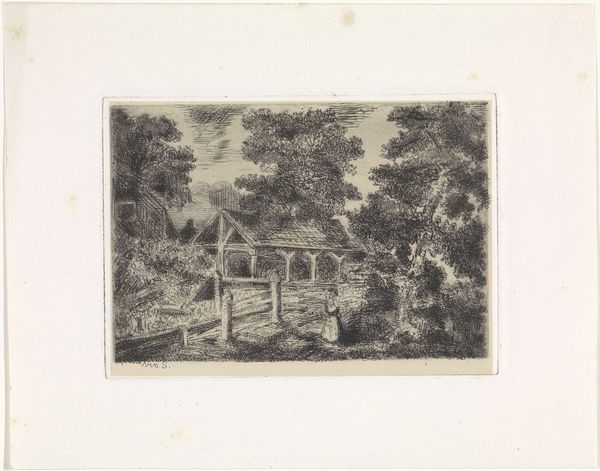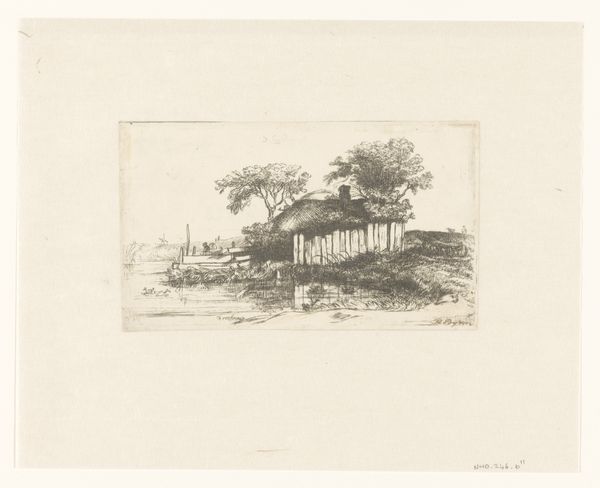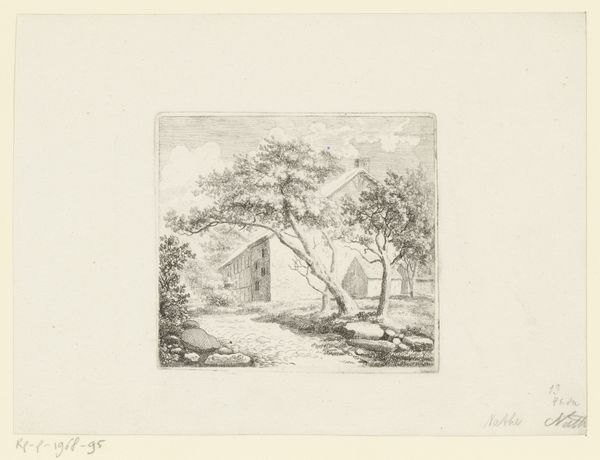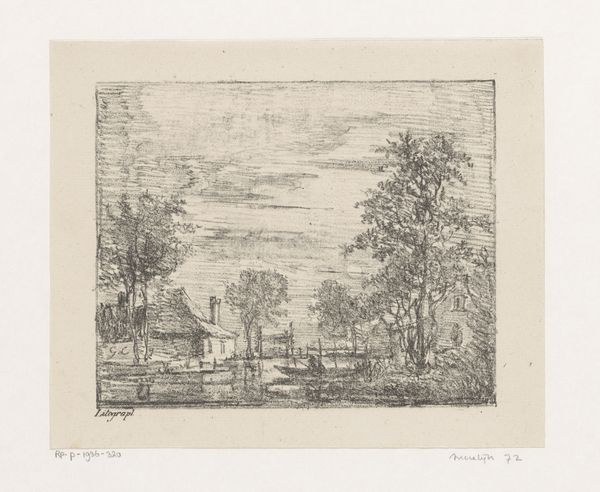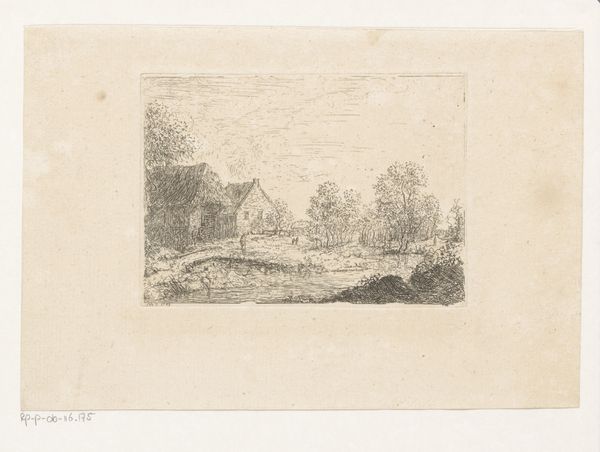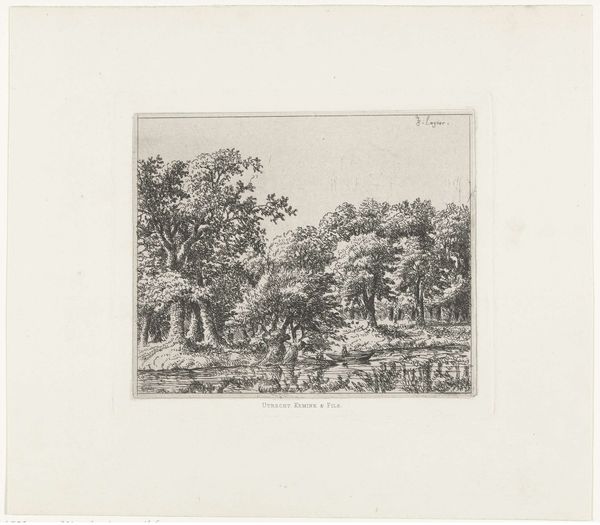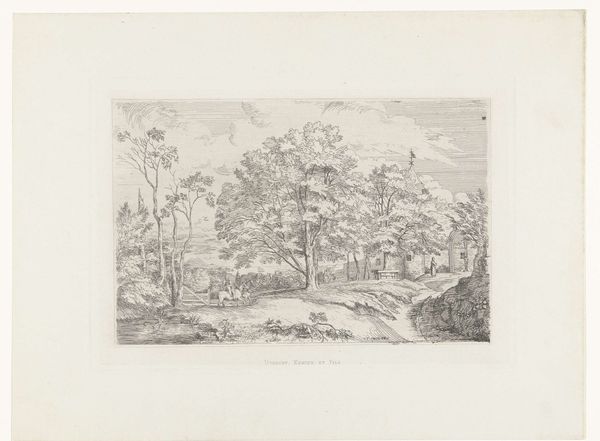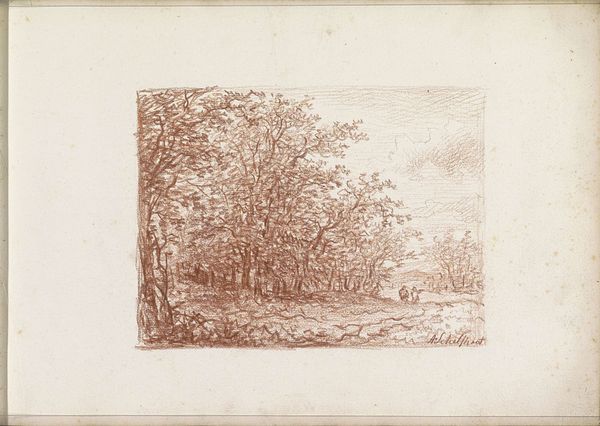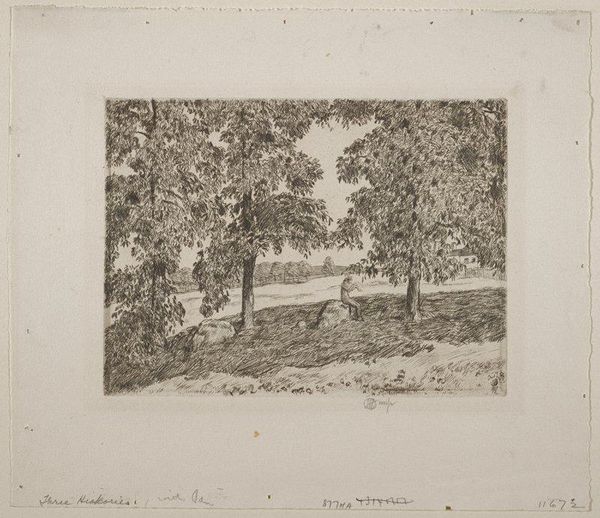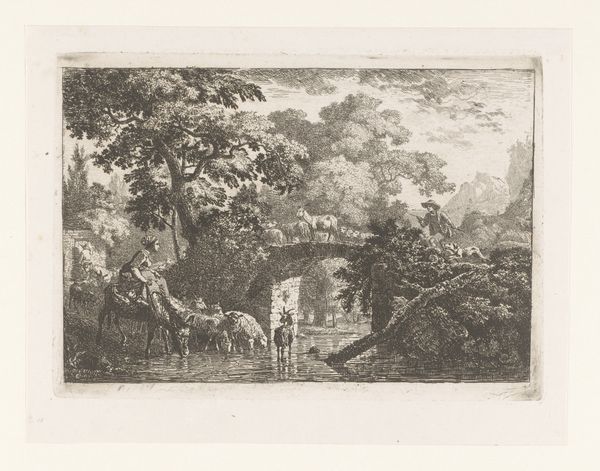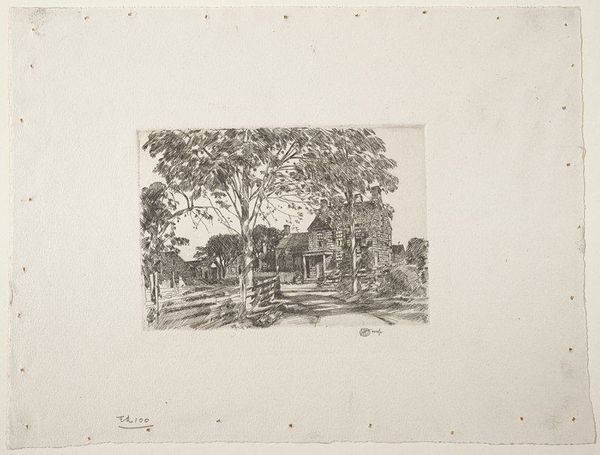
drawing, print, ink, engraving
#
drawing
# print
#
landscape
#
ink
#
engraving
#
realism
Dimensions: height 108 mm, width 153 mm
Copyright: Rijks Museum: Open Domain
Curator: This is "Boothuis op de oever," or "Boathouse on the Shore," a drawing and print by Arnoud Schaepkens, likely created between 1855 and 1904. It’s rendered in ink, utilizing an engraving technique. Editor: It's evocative. The density of the trees framing that simple boathouse gives me a sense of seclusion, almost melancholic. Curator: The artist masterfully uses light and shadow. Notice the lines around the woman near the boathouse. How does her position in the frame relate to ideas about the depiction of women at that time? Is she an anonymous figure in a domesticated nature scene, or does the location of her form hint at female subjectivity? Editor: It could reflect the constrained roles available to women. This carefully enclosed composition, a limited path forward, can mirror limited autonomy. The woman appears small within the expansive scene, seemingly heading towards the sheltered, liminal space. The woman herself could also be performing some type of emotional or physical labor related to caretaking of that boathouse structure. Curator: Interesting to consider. Schaepkens, deeply engaged with the realist tradition, emphasizes direct observation, yet even his rendering reveals an interplay between objective record and social reality. What significance can we extract from this focus on working landscapes versus more traditional romanticized visions? Editor: His choice is meaningful. Working landscapes and infrastructure, even in an idealized manner, inherently foreground the interaction between humanity and environment. The lack of grand historical allegories focuses attention on the everyday experiences of the lower to middle classes and potentially speaks to democratic impulses in artmaking. This aligns with the growing sociopolitical discourse advocating for labor and land reforms at the time. The fact that this piece can be classified as a print means it could easily have been disseminated and enjoyed in popular circles as opposed to aristocratic drawing rooms. Curator: Exactly! Consider how its existence as both drawing and print enhances our understanding of realism. Is there tension between authenticity and accessibility when a drawing, a unique art object, becomes mechanically reproduced as a print? Is the artistic meaning altered by being a unique sketch or a shared cultural reference point? Editor: The transformation allows engagement across societal levels. If Schaepkens held particular ideologies or sociopolitical values, the act of dissemination might reflect his intentional effort to make this symbolic composition part of public consciousness. Curator: That's the magic of the image—how a seemingly simple boathouse on the shore becomes a rich source of inquiry. Editor: Precisely, the visual record invites continual re-evaluation of ourselves, and our history.
Comments
No comments
Be the first to comment and join the conversation on the ultimate creative platform.
